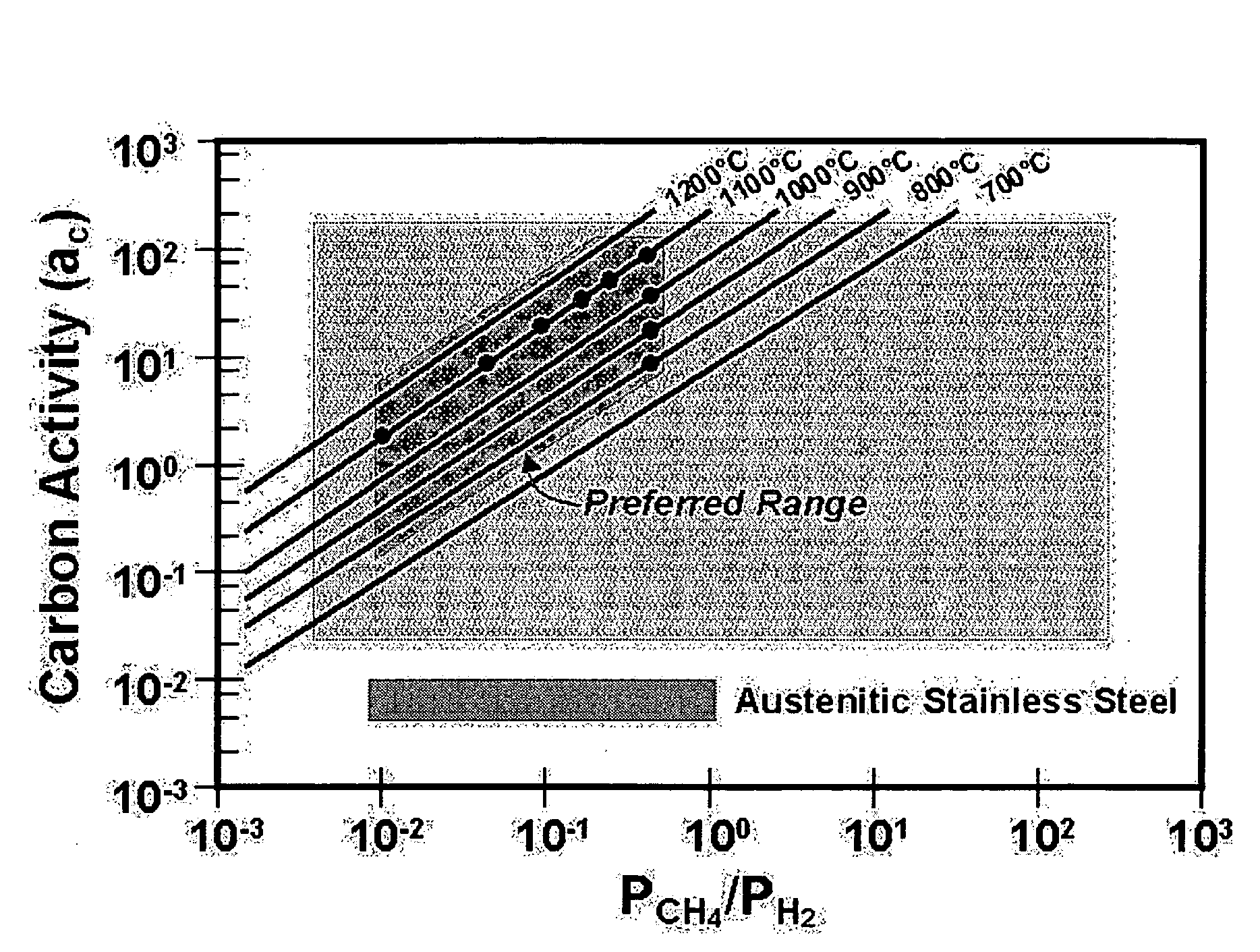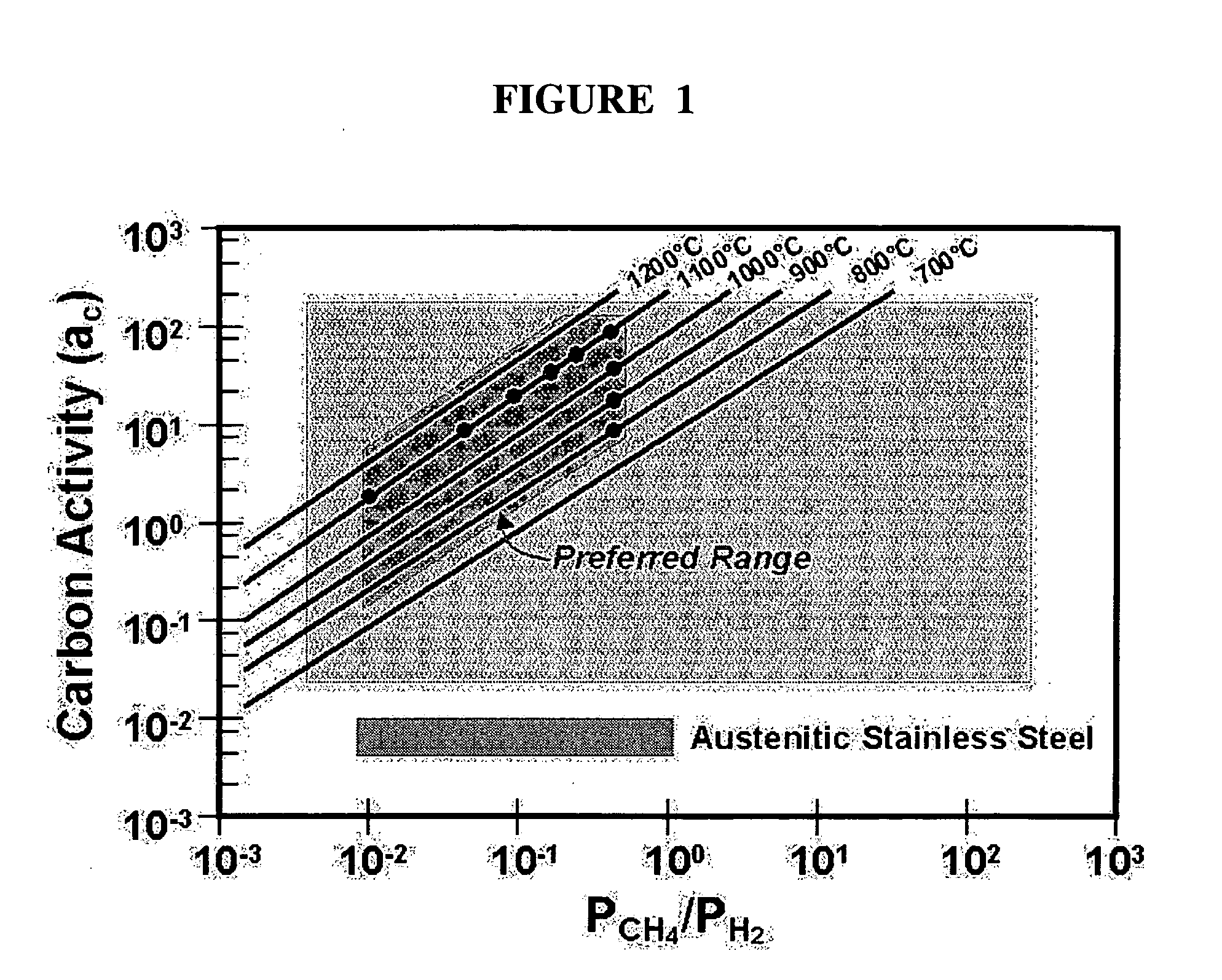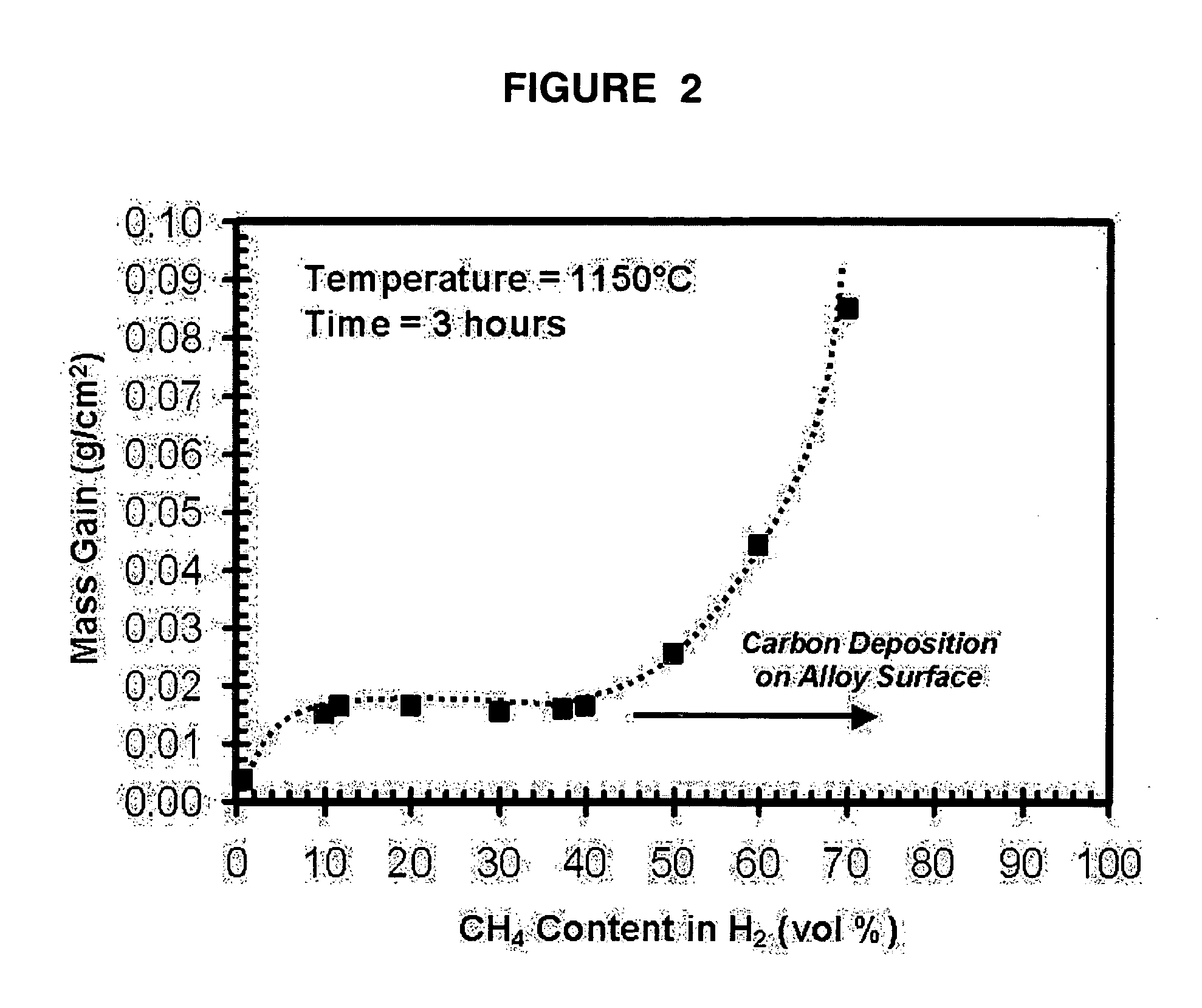Composition gradient cermets and reactive heat treatment process for preparing same
a technology of gradient cermets and reactive heat treatment, applied in the field of cermets, can solve the problems of reducing the protection of the internals of the vessel, exposing the internals of the refinery process vessel to aggressive fluids containing hard solid particles such as catalyst particles, and reducing the production cos
- Summary
- Abstract
- Description
- Claims
- Application Information
AI Technical Summary
Benefits of technology
Problems solved by technology
Method used
Image
Examples
example 1
Reactive Heat Treatment of Commercial Alloys
[0053]The reactive heat treatments were conducted on the selected chromium containing commercial alloys, 304SS, 310SS, Haynes HR120 and Inconel 353MA. The nominal compositions are given below.
TABLE 1Compositions of Chromium Containing Commercial AlloysUNSAlloysNo.Composition (wt %)304 Stainless SteelS30400Bal Fe:18.5Cr:9.6Ni:1.4Mn:0.6Si310 Stainless SteelS31000Bal Fe:25.0Cr:21.0Ni:1.5Si:2.0MnHaynes HR120N08120Bal Fe:33.0Cr:37.0Ni:2.5Mo:2.5W:0.6SiInconel 353MAS35315Bal Fe:24.8Cr:34.8Ni:1.6Si:1.4Mn
[0054]The samples had rectangular geometry with dimensions of about 1.25 cm×1.25 cm×1 cm. The sample surfaces were ground to a 600 grit SiC finish and cleaned ultrasonically in acetone. The procedure used in the invention was to establish the kinetics of carburization of the selected alloys in a purely carburizing environment (CH4—H2), which was determined thermogravimetrically in a Cahn 1000 thermogravimetric unit. The investigations were carried ...
example 2
Reactive Heat Treatment of Commercial Alloys
[0056]The chromium containing alloys listed above were reactively heat treated in a tube furnace for 24 hours at 1100° C. in 10 vol % CH4:90 vol % H2 environment. Samples were heated to a temperature of 1100° C. in a hydrogen environment and held at that temperature for approximately 5 minutes. After 24 hours of exposure, the alloy samples were cooled down. After the samples reached room temperature (25° C.), the surface microstructure and the thickness of cermet layer formed on various alloy surfaces were investigated by cross sectional scanning electron microscopy. Chemical compositions of M7C3 carbide phase and Cr-depleted binder phase were investigated by semi-quantitative energy dispersive x-ray spectroscopy. The tendencies of Fe and Ni to partition between the metal matrix and the carbide precipitates are expected to be different. The thickness of cermet layers, Cr and Fe contents in M7C3 carbide phase and composition of Cr-depleted ...
example 3
Reactive Heat Treatment of Custom-Made Alloys
[0057]Alloys containing different concentrations of Fe, Ni, Cr and Ti were prepared by arc melting. The arc-melted alloy buttons were annealed at 1100° C. overnight in inert argon atmosphere and furnace-cooled to room temperature. Cubical samples of about 1.25 cm×1.25 cm×0.75 cm were cut from the buttons. The sample faces were polished to 600-grit finish and cleaned in acetone. The specimens were exposed to a 10 vol % CH4:90 vol % H2 gaseous environment at 1100° C. for 24 hours.
[0058]Detailed electron microscopy and chemical analysis of the alloys after exposure indicated that specific alloy compositions in the Fe—Ni—Cr system generate cermet structure with M7C3 carbide and metal phase. The thickness of cermet layers, Cr and Fe contents in M7C3 carbide phase and compositions of Cr-depleted metal matrix phase within cermet layers are summarized in Table 3. By contrast to the example of selected commercial alloys, relatively thick cermet la...
PUM
| Property | Measurement | Unit |
|---|---|---|
| temperature | aaaaa | aaaaa |
| thick | aaaaa | aaaaa |
| temperature | aaaaa | aaaaa |
Abstract
Description
Claims
Application Information
 Login to View More
Login to View More - R&D
- Intellectual Property
- Life Sciences
- Materials
- Tech Scout
- Unparalleled Data Quality
- Higher Quality Content
- 60% Fewer Hallucinations
Browse by: Latest US Patents, China's latest patents, Technical Efficacy Thesaurus, Application Domain, Technology Topic, Popular Technical Reports.
© 2025 PatSnap. All rights reserved.Legal|Privacy policy|Modern Slavery Act Transparency Statement|Sitemap|About US| Contact US: help@patsnap.com



